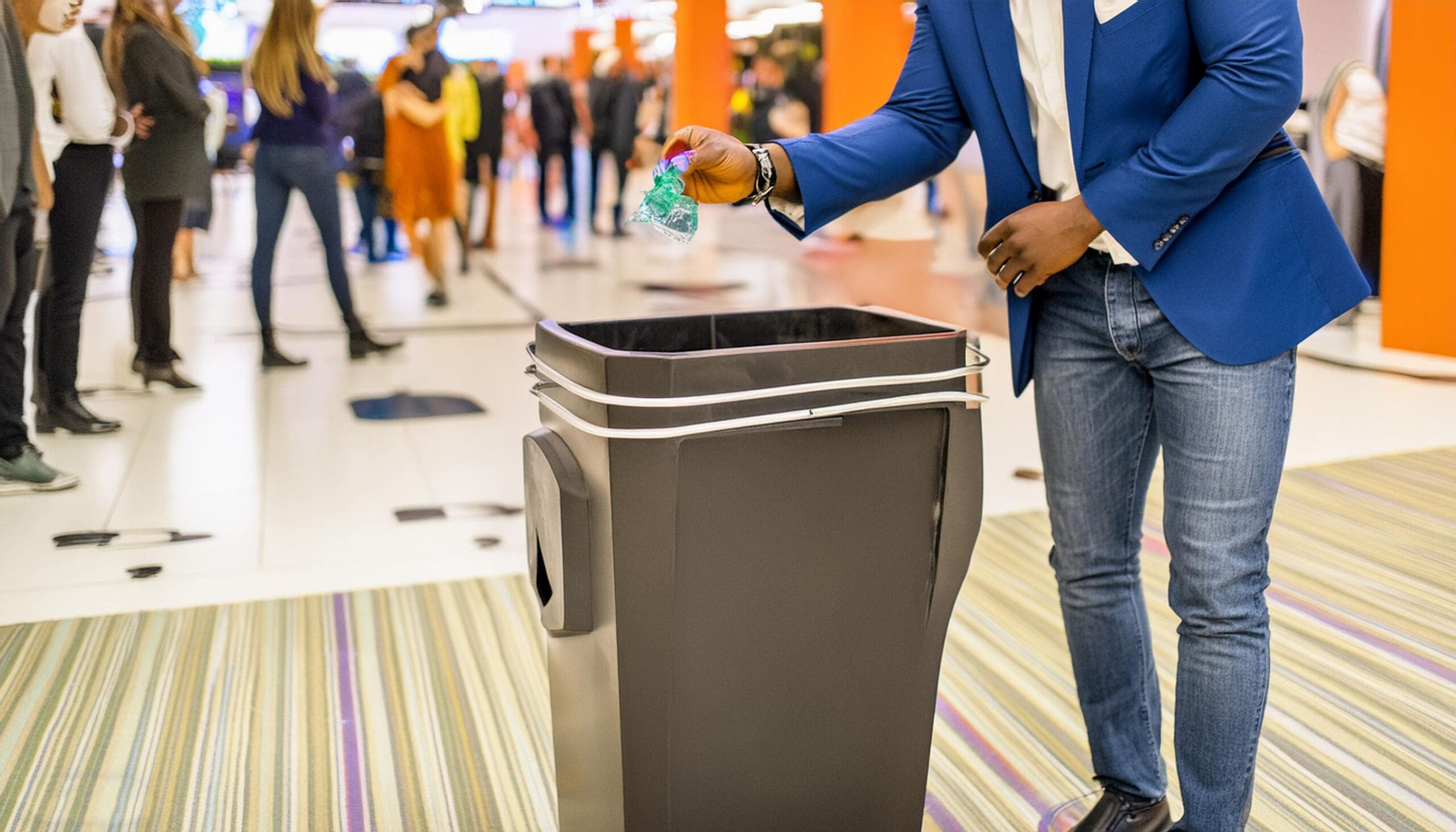Building a vibrant and engaged community around your event is no longer a mere option; it’s a strategic necessity. In the dynamic landscape of event planning, the traditional approach of focusing solely on logistics and promotions has evolved. Today, successful events are those that recognize the power of community and actively work towards fostering it. This introduction aims to shed light on why community-building is integral to the success of any event, emphasizing its impact on attendee satisfaction, brand loyalty, and the overall longevity of your endeavors.
In the past, events were often seen as standalone occurrences, with limited interaction between organizers and attendees beyond the event dates. However, the paradigm has shifted. A community-centric approach acknowledges that an event is not just a moment in time but a catalyst for ongoing connections. When individuals with shared interests, passions, or goals come together, the synergy created extends far beyond the event itself.
Understanding the Power of Community
Events have transcended being mere gatherings; they’ve become powerful tools for community building. To embark on a successful journey of building communities around your event, it’s essential to grasp the true meaning and potential impact of a community in this context. Let’s define what constitutes a community within the realm of events and explore the transformative benefits it can bring to the table.
In the context of event planning, a community is more than just a group of individuals attending the same gathering. It’s a dynamic network of people sharing common interests, passions, or objectives related to the event’s theme or purpose. This understanding is fundamental to unlocking the true potential of community building. The power of community lies not just in the collective presence at the event but in the connections, conversations, and collaborations that extend beyond the event’s duration.
Fostering a Sense of Belonging
Building a sense of belonging is a cornerstone of successful community engagement at events. When attendees feel a genuine connection to the event and each other, it goes beyond a one-time gathering. This emotional resonance creates a lasting impact, contributing to attendee satisfaction and loyalty. Event organizers can foster this sense of belonging through thoughtful design elements, personalized interactions, and acknowledging the diverse backgrounds and interests within the community. By creating an inclusive environment, events can transcend the role of a temporary meeting and become a meaningful part of attendees’ broader social and professional narratives.
Amplifying Engagement and Interaction
The heart of a vibrant event community is active engagement and interaction. Beyond the passive consumption of content, attendees should be active participants in the event experience. This involves incorporating interactive elements, such as Q&A sessions, workshops, and networking opportunities. The more engaged attendees are, the more likely they are to form connections with both the event and fellow participants. Successful community-building events understand the value of creating an environment where every attendee feels like a contributor, not just a spectator. Whether through live polls, collaborative projects, or shared experiences, amplifying engagement transforms an event from a one-way communication platform into a dynamic and interactive community hub.
Building Brand Advocacy through Community
A thriving event community can be a powerful catalyst for brand advocacy. Attendees who feel a strong connection to the community are more likely to become loyal advocates for the brand hosting the event. This advocacy extends beyond the event itself, with attendees willingly sharing their positive experiences with a broader audience. Event organizers can strategically leverage this enthusiasm by providing avenues for attendees to share their thoughts, experiences, and takeaways. Encouraging user-generated content, testimonials, and social media interactions can turn attendees into influential brand ambassadors. The result is a community-driven brand narrative that extends the reach and impact of the event far beyond its immediate timeframe.
Pre-Event Strategies for Community Building
The success of building a community around your event often begins before the event itself. Implementing effective pre-event strategies is crucial for laying the groundwork and generating anticipation among potential attendees. This section explores key approaches to kickstart community building before the event, ensuring a strong foundation for engagement and participation.
Leveraging Social Media for Anticipation
Social media platforms serve as dynamic tools for creating buzz and anticipation before an event. Event organizers can strategically use platforms like Twitter, Instagram, and Facebook to share teasers, behind-the-scenes glimpses, and countdowns. By employing event-specific hashtags, organizers facilitate conversations and connect attendees with shared interests, creating a sense of community even before the physical gathering begins. This digital prelude sets the stage for meaningful interactions and ensures that attendees enter the event with a sense of camaraderie.
Setting Up Dedicated Forums and Platforms
Establishing dedicated online forums or platforms for your event creates a virtual space where attendees can converge, exchange ideas, and build connections. These forums act as communal hubs for discussions, questions, and networking. Event-specific apps or websites provide a centralized location for participants to engage with event-related content, speakers, and each other. By fostering this digital community before the event, organizers encourage attendees to become familiar with one another, cultivating a sense of community that seamlessly transitions to the physical event.
Engaging Potential Attendees with Exclusive Content
Exclusive pre-event content serves as a powerful tool for engaging potential attendees and fueling their excitement. This could include sneak peeks of event themes, interviews with speakers, or exclusive access to relevant resources. By providing valuable and exclusive content, event organizers not only build anticipation but also showcase the event’s value proposition. This strategic engagement not only attracts participants genuinely interested in the event’s content but also initiates the community-building process by creating a shared experience among those anticipating the upcoming event.
By implementing these pre-event strategies, organizers set the stage for a successful community-building journey. Leveraging social media, establishing dedicated online platforms, and offering exclusive content contribute to the creation of a vibrant and connected community even before the event doors open. These efforts go beyond mere promotion; they form the building blocks for an event community grounded in shared interests and a sense of anticipation.
Crafting an Inclusive Event Experience
Designing an event with community engagement in mind is essential for creating a lasting impact on attendees. This section explores how event organizers can craft an inclusive experience that goes beyond the traditional model of passive participation, incorporating interactive elements and networking opportunities to foster a sense of community.
Designing the Event with Community Engagement in Mind
Successful community-building events start with intentional design. Organizers should consider the overall event structure, ensuring it allows for ample interaction among attendees. This includes strategically planning networking sessions, discussion panels, and collaborative activities. By weaving these elements into the event agenda, organizers not only provide valuable content but also create opportunities for attendees to connect and engage with each other. The physical and virtual spaces should be conducive to conversations, encouraging the formation of a community that extends beyond the event itself.
Incorporating Interactive Elements and Networking Opportunities
Interactivity is a key driver of community engagement. Events should incorporate various interactive elements, such as live polls, Q&A sessions, and hands-on workshops. These activities not only make the event more dynamic but also encourage attendees to actively participate and contribute. Networking opportunities are equally crucial, whether through dedicated sessions, virtual meetups, or social events. These intentional moments of interaction foster relationships and build a sense of community among attendees who share common interests or goals.
Encouraging User-Generated Content Before, During, and After the Event
Community engagement extends beyond the event’s scheduled hours. Encouraging attendees to generate content before, during, and after the event is a powerful strategy. This could include sharing their expectations, experiences, and takeaways on social media or event-specific platforms. Organizers can create dedicated spaces for user-generated content, such as photo contests or discussion threads. By actively involving attendees in the content creation process, organizers not only enhance the overall event experience but also contribute to the sense of community ownership and collaboration.
Crafting an inclusive event experience involves thoughtful planning and a commitment to facilitating connections. By designing the event with community engagement in mind, incorporating interactive elements, and encouraging user-generated content, organizers can create an environment where attendees feel an active part of a larger community. This approach transforms events into more than just informational sessions; they become platforms for meaningful connections and shared experiences.
Post-Event Community Nurturing
The conclusion of an event doesn’t mark the end of community-building efforts; it’s a transition into the post-event phase where organizers have the opportunity to nurture and sustain the connections formed. This section explores strategies for maintaining the momentum after the event concludes, gathering feedback, and initiating discussions to keep the community alive and thriving.
Sustaining the Momentum After the Event
Post-event engagement is crucial for maintaining the momentum generated during the event. Event organizers should have a plan in place to keep the community active and engaged in the days and weeks following the event. This could involve sharing post-event content, such as session recordings, highlights, or exclusive interviews. By extending the event experience beyond its physical or virtual confines, organizers keep the community connected and interested, ensuring that the enthusiasm generated during the event doesn’t dissipate.
Gathering Feedback and Testimonials
Feedback is a valuable tool for understanding the community’s experience and identifying areas for improvement. Organizers should actively seek feedback through surveys, polls, or dedicated feedback sessions. Additionally, encouraging attendees to share testimonials about their event experience not only provides valuable insights for future planning but also serves as user-generated content that can be shared within the community. Transparent communication about how feedback will be used for future events fosters a sense of collaboration and demonstrates a commitment to continuous improvement.
Initiating Discussions and Planning for Future Events
Community nurturing involves keeping the conversation alive. Event organizers can initiate discussions on relevant topics, creating forums or online spaces where community members can share insights, ask questions, and connect. This ongoing dialogue contributes to the organic growth of the community. Simultaneously, organizers can start planning for future events, involving the community in the decision-making process. This not only keeps the community engaged but also empowers them to play a role in shaping the direction of future gatherings.
The post-event phase is a critical period for community building, where the initial connections formed during the event can either flourish or fade. By sustaining momentum, gathering feedback, and initiating discussions about future events, organizers solidify the foundation for a long-term, thriving community. This proactive approach extends the community’s lifespan, ensuring that it remains a vibrant and integral part of participants’ ongoing experiences.
Tools and Technologies for Community Building
In the digital age, the effective use of tools and technologies is paramount for successful community building around events. This section explores the diverse array of platforms and technologies available to event organizers, focusing on social media, dedicated forums, and data analytics to optimize community engagement.
Exploring Social Media Platforms, Forums, and Event-Specific Apps
Social media platforms are central to contemporary community building. Event organizers can strategically leverage platforms such as Twitter, Instagram, and LinkedIn to create dedicated event pages, share updates, and facilitate conversations. Additionally, the establishment of dedicated forums or platforms, whether through event-specific apps or websites, provides a centralized space for community interaction.
These digital spaces serve as virtual meeting points, fostering discussions and connections among attendees before, during, and after the event. Exploring the diverse functionalities of these tools ensures that organizers can tailor their approach to the specific needs and preferences of their community.
Integrating Community-Building Tools Seamlessly into Event Planning
Seamless integration of community-building tools into the event planning process is crucial for maximizing their impact. Event organizers should prioritize platforms that seamlessly align with the overall event experience, ensuring a cohesive and user-friendly interface. This includes streamlined registration processes, easy navigation within dedicated forums, and integration of social media functionalities. The goal is to create an environment where attendees can effortlessly engage with both the event content and the broader community, enhancing their overall experience and strengthening their connection to the event and fellow participants.
Utilizing Data Analytics to Understand and Improve Community Engagement
Data analytics plays a pivotal role in refining community-building strategies. Organizers can utilize analytics tools to track engagement metrics, monitor participant interactions, and gain insights into the community’s preferences. By understanding attendee behavior and preferences, organizers can tailor future events to better align with the community’s interests.
Additionally, data-driven insights enable organizers to identify trends, measure the success of engagement initiatives, and make informed decisions to continuously enhance the community-building process. Leveraging data analytics transforms community building from a subjective effort into a strategic and data-informed approach.
Effective community building is contingent on the judicious use of tools and technologies. By exploring social media platforms, seamlessly integrating community-building tools into event planning, and utilizing data analytics, organizers can create a tech-savvy environment that enhances community engagement and ensures a cohesive and impactful event experience.
Overcoming Challenges in Community Building
While the benefits of building a community around your event are significant, challenges inevitably arise in the process. This section addresses common hurdles faced by event organizers in fostering event communities and provides strategies to overcome these challenges, ensuring a resilient and thriving community.
Addressing Common Hurdles in Fostering Event Communities
Building a community is not without its challenges. Common hurdles include initial engagement barriers, diverse participant expectations, and potential conflicts within the community. Addressing these challenges requires a proactive approach. Event organizers should implement strategies to break down engagement barriers, such as providing clear communication and incentives for participation.
Acknowledging and embracing the diversity of participant expectations involves creating flexible event structures that cater to various interests and preferences. Additionally, a robust moderation and conflict resolution strategy is essential for managing potential conflicts within the community, ensuring a positive and inclusive environment for all participants.
Strategies for Managing Conflicts Within the Community
Conflicts within a community are almost inevitable, but effective management is crucial for maintaining a healthy and productive environment. Event organizers should establish clear community guidelines and codes of conduct, setting expectations for respectful and constructive communication.
Implementing a robust moderation system, either through designated moderators or advanced moderation tools, helps identify and address conflicts promptly. Creating channels for open communication, where participants can express concerns or disagreements, fosters a culture of transparency and collaboration. By proactively managing conflicts, organizers prevent the negative impact they can have on community morale and cohesion.
Adapting and Evolving Community-Building Strategies Over Time
The landscape of community building is dynamic, and strategies that work initially may need adaptation over time. Event organizers should continuously assess the effectiveness of their community-building strategies, seeking feedback from participants and staying attuned to industry trends.
Flexibility and a willingness to experiment with new approaches are key to staying ahead of evolving community dynamics. This adaptability ensures that the community remains relevant, engaging, and aligned with the changing needs and expectations of its members. By recognizing that community building is an ongoing process, organizers can proactively evolve their strategies to foster sustained growth and engagement.
Building a resilient event community involves navigating and overcoming challenges. Addressing common hurdles, implementing effective conflict management strategies, and adapting community-building approaches over time contribute to the long-term success and vitality of the community. By approaching challenges as opportunities for growth, event organizers can cultivate a robust and enduring sense of community among participants.
Realizing the Long-Term Benefits
The true measure of success in building communities around events lies in the realization of long-term benefits that extend far beyond individual gatherings. This section explores how a strong event community contributes to brand loyalty, the potential for year-round engagement, and the transformative impact on attendees’ perceptions and experiences.
Examining How a Strong Event Community Contributes to Brand Loyalty
A thriving event community serves as a powerful catalyst for building brand loyalty. When attendees feel a deep connection to the community surrounding an event, this sentiment naturally extends to the brand hosting it.
Organizers should recognize that each positive community interaction contributes to an attendee’s perception of the brand. By fostering a sense of belonging, providing valuable content, and facilitating meaningful connections, event organizers create a positive brand association. This loyalty transcends individual events, with attendees more likely to choose and advocate for brands that have played a central role in their community-building experiences.
The Potential for Year-Round Engagement Beyond Individual Events
A successful event community becomes more than a once-a-year gathering; it evolves into a year-round engagement platform. Event organizers can leverage the momentum generated during specific events to sustain community interactions between gatherings. This involves hosting regular virtual meetups, webinars, or online discussions related to the event’s theme.
By maintaining a consistent and active presence, organizers ensure that the community remains vibrant and connected, even in the absence of a specific event. This year-round engagement not only strengthens the sense of community but also positions the event as an ongoing and integral part of participants’ lives.
The realization of long-term benefits from event communities involves a strategic and sustained approach. By examining the contribution to brand loyalty, fostering year-round engagement, and drawing inspiration from success stories, event organizers can ensure that their efforts extend far beyond the immediate event horizon. A strong event community becomes a cornerstone for brand success, participant satisfaction, and ongoing engagement in the ever-evolving landscape of event planning.
Conclusion
In the dynamic landscape of event planning, the emphasis on building communities around events is not merely a trend but a strategic imperative. As we’ve explored throughout this guide, the power of a strong event community goes beyond the confines of a single gathering, influencing brand loyalty, sustaining engagement, and transforming participant experiences. Let’s recap the key takeaways and encourage event planners to invest in community building for sustained success.
Key Takeaways:
- Community as a Strategic Cornerstone
- A community is more than a gathering; it’s a dynamic network of individuals sharing common interests.
- Understanding the power of community is essential for unlocking its transformative benefits.
- Pre-Event Strategies:
- Leveraging social media, setting up dedicated forums, and providing exclusive content generate anticipation and lay the groundwork for community building.
- Inclusive Event Experience:
- Designing events with community engagement in mind involves incorporating interactive elements and networking opportunities.
- Encouraging user-generated content fosters a sense of ownership among attendees.
- Post-Event Community Nurturing:
- Sustaining momentum, gathering feedback, and initiating discussions ensure that the community remains vibrant post-event.
- Tools and Technologies:
- Exploring social media, integrating community-building tools seamlessly, and utilizing data analytics optimize engagement and interaction.
- Overcoming Challenges:
- Addressing common hurdles, managing conflicts effectively, and adapting strategies over time contribute to a resilient community.
- Long-Term Benefits:
- A strong event community contributes to brand loyalty, supports year-round engagement, and serves as a transformative force in participants’ lives.
Encouragement for Event Planners
In conclusion, community building is not a one-time effort but a continuous journey. Event planners are encouraged to view each event as an opportunity to cultivate connections, foster engagement, and contribute to the long-term success of their brand. By embracing the principles outlined in this guide, event organizers can create experiences that resonate far beyond the event dates, leaving a lasting impact on participants and building a community that stands the test of time. As the landscape of events evolves, the commitment to community-building remains a cornerstone for those who aspire not only to host events but to create meaningful and enduring experiences for their attendees.












